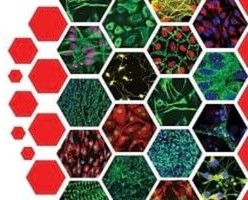Bovine Plasma Vitronectin
Catalog No.
8538
ScienCell™ Bovine Plasma Vitronectin is purified from bovine plasma by affinity chromatography. It is supplied as a sterile solution in Dulbecco's Phosphate-Buffered Saline (DPBS).
Caution: If handled improperly, some components of this product may present a health hazard. Take appropriate precautions when handling this product, including the wearing of protective clothing and eyewear. Dispose of properly.
$303.00
In Stock

